My number one goal in this column is to make you money.
The easiest way to do this is to figure out which cards are likely to go up in value and share that information with you so that you can buy and trade accordingly. Less obvious but equally important are my articles on larger trends, heuristics, biases, marketing tricks, and other ways to become a smarter and more accomplished trader or speculator. I also write articles that seek to educate you on rare cards or Magic accessories that you might not otherwise know about so that you can snatch them up if you ever see them underpriced anywhere.
This article, though, is something a little different. It will act as the start of a miniseries that I will revisit from time to time this year designed to focus on two different places where I can help you make money—or at least not lose it.
The first is to help you properly protect the assets that you have. Whether you have a massive collection of Magic cards or a small rotating stock of trades, it is very important to properly maintain them so that you aren’t losing value without knowing it. This article will focus on proper binder storage, and at some point in the future I will address other topics in this vein, such as how to unwarp foils (if it is even possible) and how to go about insuring your collection.
The second subtle way I can help you make money is to save you from spending your cash on poor products. By taking a look at which Magic accessories give you the most bang for your buck, I hope to subtly increase your weekly Magic budget by saving you cash from an unexpected source. Are you sick of spending ten dollars on sleeves only to have them break within a few hours? In this article, I’m going to take an in-depth look at KMC vs. Dragonshield vs. Ultra Pro in the hopes of settling the debate. In future weeks, I will tackle deck boxes, storage, backpacks, playmats, and other play/storage accessories.
Of course, it doesn’t seem right to end the week without talking about pricing trends, so I’ll cover the latest spoiler information and tournament news before calling it a day.
This may not be the flashiest thing you read this week, but it might be the widest reaching. Everyone who plays Magic can learn something here—I know that if I had read this article years ago, I would have wasted far less money on lousy sleeves and I’d have ended up with fewer damaged cards. Ask anyone in finance: every little thing counts. This is my attempt to reach into the margins.
The Problem with Binders
Let’s get the biggest offender out of the way first. There are two types of standard binders: C-rings and D-rings. Here’s a picture of a C-ring binder:
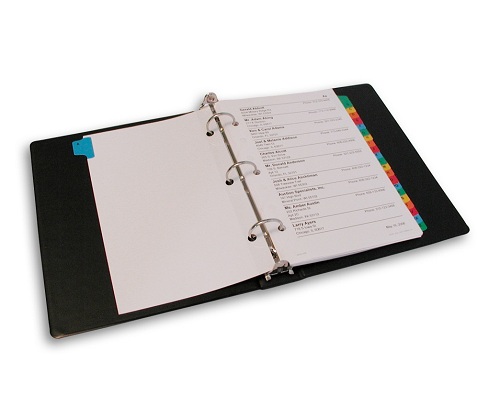
And here’s a D-ring binder:
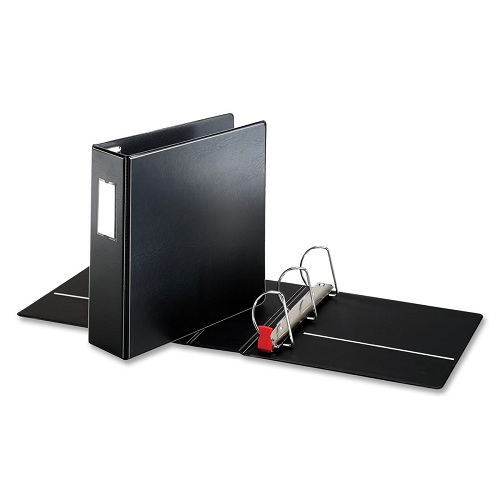
See the difference? A D-ring binder has a flat side where the pages sit. C-ring binders are fully rounded.
Never, ever put your cards in C-ring binders. Have you ever seen a card with a small indentation on the back approximately 1/8th of an inch tall and 1/4th of an inch wide? This is binder wear that comes from a card being pressed up against the C-ring of a 3-ring binder. This sort of wear is very common, and it alone can cause a card to go from NM to HP.
This type of wear can also happen if your D-ring binder is overstuffed. As a general rule, I would never store your most valuable cards (dual lands, etc.) in the three pockets closest to the binder rings. Too much can go wrong.
It is also important to use the right kind of 9-pocket pages for your cards. What are 9-pocket pages? These things here:
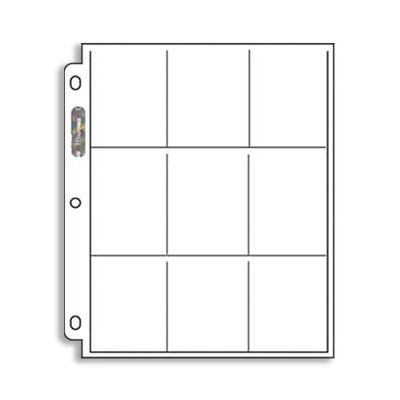
Most 9-pocket pages are fine for both daily and long-term use. I have never found a particularly high-end brand to use for long-term collection storage, but the Ultra Pros are somewhat reasonable—they don’t warp over time but do collect dirt and smudges fairly easily.
The most important thing is to make sure that your 9-pocket pages are PVC and acid free. Unfortunately, many of the bargain brands are not, including many that I’ve seen on eBay or down at the local Target. While these pages are cheaper, the acid in them will eat at your cards over time and destroy them. Any pages that stiffen or yellow are not PVC and acid free and should be discarded immediately. They will damage your collection.
What about Monster binders? You know, those tough looking books that don’t have a ring and have side-loading pouches to help deter theft. You might also know them as FT Protection binders—I believe they have recently purchased Monster and are rebranding the same product:
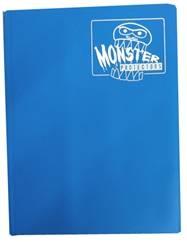
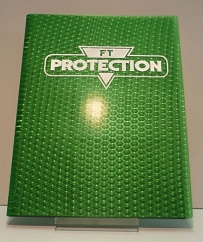
The first thing to note is that these binders are not PVC free. You may see claims in other parts of the Internet saying they are, but from what I’ve been able to determine those claims are based on incorrect assumptions. These binders are not made in the US, nor are they really made for US consumers—their high price point is generally due to import costs. I have spoken with multiple sources who have spoken to reps at the company (before the sale to FT, I believe) who claim that they use "trace amounts of PVC." Whatever plastic they use, I hate it. The pages tend to stiffen in the heat, and these binders tend to maintain a weird industrial smell for quite a while. Their rivet-based construction also tends to fall apart after a few years of moderate use.
The black plastic that the cards rest on in these binders is an even bigger issue. It is pockmarked, and this pattern can become permanently transferred to the backs of your cards if you put them in the binder without sleeves and someone puts something heavy on top of your Monster. The owner of a store in my area told me that she once had to discount an entire collection buy due to the fact that the backs on all the cards in one of these books were ruined by the binder. Luckily, sleeving cards before putting them in to your Monster binder will prevent this from happening.
Did I scare you off? Luckily, we have a reasonable alternative to explore: Ultra Pro’s Pro-Binder. This one is generally more affordable—$18 on StarCityGames.com versus the $30ish that most Monster binders cost. These binders have a stitched construction versus Monster’s rivets, making them longer lasting. The leather cover and strap are also a very nice upgrade. These books are PVC and acid free, and they don’t have divot-y plastic that might randomly destroy your cards.
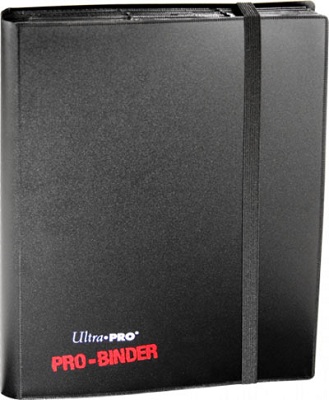
So what’s the problem with these books? Well, they’re made by Ultra Pro, which means they use the same plastic as their sleeves and other binders. Whatever their formula is, it stretches, scuffs, and scratches very easily. I have three of these binders—the outsides still look great, but the pocket pages have gotten cloudy and dull. They’re great as long as you don’t keep taking cards in and out of them or don’t care about dirty pages, but if you do I recommend a more standard binder for your day-to-day trading. That way you can keep replacing pages when they start to get dull. These binders are fantastic for use as longer-term collection storage.
Sleeves
Deciding which brand of sleeves to use can be a deeply personal choice. There is no single best answer, and people have been passionately debating it for years. Heck, the "Which Brand of Sleeves Should I Use?" thread on MTG Salvation is over a hundred pages long and never slows down.
Each brand has positives and negatives, loyalists and haters. When I talked about confirmation bias last week, I should have brought up sleeve preference as a near-perfect example of this. Generally, most people’s biases are based entirely on which sets of sleeves they’ve been most happy with personally. Because of that, sorting through the noise isn’t easy.
Let’s go through the sleeve options one brand at a time.
Those Weird Cheap Sleeves on the Rack at Your Local Game Store
- Acid/PVC Free – Who knows? They’re probably like 20% acid and 50% sawdust.
- Price Point – Dirt cheap. Generally around $2 for as many as you can stuff in your pockets.
- Durability – Similar to Phantasmal Image in Limited.
- Coolness Factor – Low to medium. The solid color sleeves are generally only available in some horrid shade of orange or yellow, but sometimes the ones with art can be really cool. I once had a set of these with skulls on the back, and inside the skull’s eyeballs were smaller skulls that were on fire. Too often, though, these sleeves are only available in shades of half-naked anime women.
Everyone has bought at least one pack of these sleeves before in a desperate moment. Most often, this happens when you forget to bring sleeves to a Draft event and open a Bonfire or something. This is fine if you stop there, but this usually leads to a much more dangerous idea at the end of the night—why not buy a second pack of the same kind of sleeve and use it for a Constructed deck?
This is almost always a terrible idea. Best case, you find a set of cheap sleeves that are pretty cool but are stuck throwing them out a few weeks later when ten of them break and you can’t by a second pack because they’ve been discontinued. Worst case, you get thrown out of a tournament when your ugly sleeves display uneven wear and it appears as though you are cheating.
Ultra Pro Sleeves
- Acid/PVC Free – Yes.
- Price Point – Low to High: $3 per 50 for solid color, $3.50 per 50 for matte, $8 per 80 for illustrated.
- Durability – Low.
- Coolness Factor – Low for solid colors. High for card art.
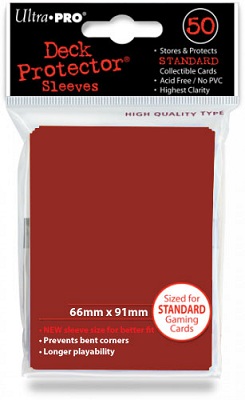
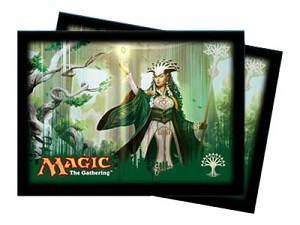
Ultra Pro sleeves are generally the cheapest reasonable options available in your local store. They are always well stocked, and I would guess that 75% of matches at most LGS events are played with these sleeves. If you need a fresh pair of sleeves before a tournament that can make it through the whole event, Ultra Pros are a reasonable pick.
The biggest advantage that Ultra Pros have over the other brands is the marketing deal the company has signed with WotC giving them exclusive rights to use the Magic: The Gathering logo and card art. Because of that, Ultra Pros are often the most eye-catching sleeves available. The mattes and solids are also quite reasonably priced.
The problem is that Ultra Pros are only slightly more durable than any random pack of bargain sleeves. They aren’t immune from any of the wear issues that sleeves develop over time: splitting, collecting clumps of dirt, and developing a ‘crinkle’ over time on their top half.
Of the two, I have always found the solid sleeves to be consistently more durable than the printed ones, which are sadly among the lowest quality sleeves you can buy. I’ve had issues making these last a single tournament, much less several. At one point a few years ago, I resleeved several of my Commander decks with these, and none of them have made it to the present day.
It isn’t bad to buy several packs of solid Ultra Pros to use as Draft sleeves, but it’s important to stay vigilant in order to insure that your sleeves stay consistent. Ultra Pro occasionally changes the color of each sleeve slightly, and you’ll want to make sure you don’t mix two subtly different sets of sleeves together.
Dragonshields
- Acid/PVC Free – Yes.
- Price Point – Medium. $10 for 100.
- Durability – High.
- Coolness Factor – Medium. The available colors are generally tasteful and understated.
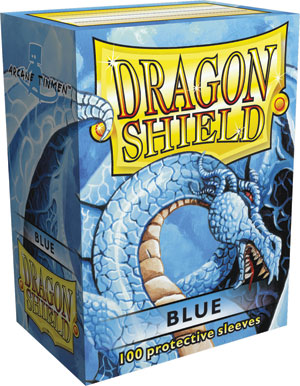
The high-end sleeve debate generally comes down to this: KMC sleeves or Dragonshields? Let’s examine them one at a time.
First, Dragonshields rarely split. They are far more durable than Ultra Pros, and I’ve had several lots of Dragonshields last me for five to six years of light play. Because they rarely break, buying a box of these for $10 and calling it a day is a reasonable option for throwing together a Commander deck. At this point, I would say that most of the sleeves that I have today are Dragonshields.
That isn’t to say that these sleeves are perfect. For one, quality control on these sleeves is lower than I would like. Often, sleeves from different batches of Dragonshields—even if they are purchased at the same time from the same display box—are cut at significantly different heights. This leads to awkwardness when putting together a cube or assembling a deck’s worth of sleeves from a random box of sleeves. Regardless of how they’re cut, I always find Dragonshields to be just a tiny bit too tall for a Magic card, and this can sometimes lead to the tops of these sleeves crinkling over time. The other issue is that these sleeves sometimes come right out of the pack with dirt on them and little bits of extra plastic stuck to the sides.
Lastly, I’ve found that Dragonshields tend to pick up dirt remarkably easy. My cube was initially sleeved in Dragonshields, and I was scraping dirt off the bottom of cards after only a single play.
KMC
- Acid/PVC Free – Yes.
- Price Point – High. $7 per 80 for super, and $8 per 80 for matte.
- Durability – High.
- Coolness Factor – Medium for super, high for matte.
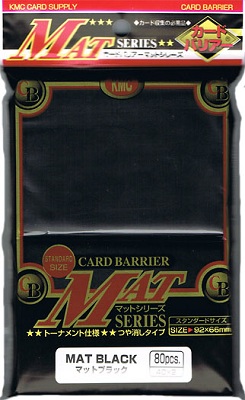
I’ll get my bias out of the way: KMC mattes are my personal choice for the best sleeves available. After getting almost immediately frustrated at how much dirt my cube was collecting in Dragonshields, I ponied up for KMC black mattes and noticed an immediate difference. KMCs lay much flatter than the Dragonshields, and the uniformity is clear from the top of the sleeve. This is probably because they are better sized for Magic cards—that extra half-millimeter of space on the top doesn’t happen here. The matte finish makes shuffling with sweaty hands easier, too, and they collect far less dirt. Just like Dragonshields, these sleeves rarely split.
Where does KMC fail to meet the grade? First off, their price point is very prohibitive for Commander—your best option is probably to buy three packs of 80 and sleeve two decks at a time. The other problem is that these sleeves sometimes develop tiny pockmarks on their backsides. For whatever reason, this problem seems especially endemic to KMC, and it might make your deck look marked in a tournament. Overall, I would say to buy a new pack of sleeves before each major event regardless, but this is something you need to be actively aware of with this product.
In the end, I would suggest using KMC sleeves for cube, Dragonshields or KMC sleeves for Commander decks, KMC or Ultra Pro sleeves for Constructed tournaments, and whatever you have lying around for Draft.
To Double Sleeve or Not?
If you want more protection for your expensive cards than a regular sleeve offers, your best option is to double sleeve some of your decks. Two companies make super thin inner sleeves:KMC has Perfect Size sleeves and the Ultra Pro has Pro-Fit sleeves. The KMC brand sleeves generally retail around 30% higher than the Ultra Pros.
Every single player I spoke with told me that they prefer the KMC brand inner sleeves, and I could not find a single person who had a good experience with the Ultra Pro product. Weirdly, I’ve been told that the Pro-Fits feel thinner/flimsier but are actually thicker, meaning that they don’t fit as well into outer sleeves. They are also a much tighter fit on cards, especially on foils, and some players believe that these sleeves can help contribute to foil warping. They stretch easily, split constantly, and muliple people have told me they have experienced fully defective packs with multiple heights and very dodgy QC.
I was not given a single complaint about KMC’s Perfect Size sleeves. In my own experience, I have bought roughly 30-40 packs of these over the years and have found them all to be of excellent quality.
There are two main advantages to double sleeving your deck. The first is that it is a strong line of defense for your expensive cards from errant spills and other food/water damage that can sneak inside the other sleeve pretty easily. The second is that it helps minimize the effect of foil warping. You can generally run foils alongside non-foils in a perfect fitted deck without being able to cut directly to a foil card.
Other than the price, there are a few negatives to double sleeving. The first is that it massively increases the size of your deck, and most double-sleeved decks can no longer fit inside a standard deck box. The second is that it can be kind of time consuming and difficult to double sleeve a deck. Not every pack of inner sleeves is cut the same way, nor is every pack of outer sleeves. Sometimes, you will end up struggling to fit the inner sleeve into the outer sleeve and your perfect fit will start sliding up the card as you put it in.
In order to have your perfect fits work effectively, you will need it to put them onto each card upside down relative to the outer sleeve, with the bottom of the sleeve resting on the top of the card. After putting on the perfect fit, you will have to use your thumb and forefinger to slide it in to the outer sleeve in such a way as to make sure the perfect fit doesn’t start coming off the card. Sometimes, this creates a nice little greasy thumb print on the front of the perfect fit inside the outer sleeve. Always wash your hands before double sleeving a deck in order to minimize this.
Double-sleeved decks also tend to carry a lot of air in them at first. Your double-sleeved deck will puff up, and cards will start to slide everywhere. Every attempt you make to get the air out will be temporary, and a few minutes later the cards will puff back up again. This is perfectly normal. It is essential to put double-sleeved cards in a tight deckbox after being sleeved up in order to correct this. After about a week, the sleeves will settle down and will not puff up on you again.
Perfect fit sleeves will not work with all outer sleeves, but they seem to work with most. Ultra Pro matte sleeves are a little too tight, though normal Ultra Pros tend to work well. KMC outer sleeves sometimes fit perfectly with Ultra Pros, but some packs are a little narrower and have a VERY tight fit. Interestingly enough, Dragonshields—which tend to have bad QC in terms of sleeve height—always seem to fit the width of an inner sleeve perfectly.
Overall, I have found that it made sense to double sleeve my cube and several of my Legacy decks. I don’t bother with it for anything else simply because it is more hassle than it’s worth unless you’re packing some seriously valuable cards.
This Week’s Trends
Something I’ve often struggled with in this space is how to get the latest financial news across to you in a helpful manner. Because this column is weekly and I often submit it several days before it runs, whatever I post is going to be yesterday’s news by the time you read it. Heck, the time to act is often after I’ve read it myself.
Even if you can’t make money, it’s still important that you are made aware of the latest pricing trends. That way, you still know which cards have spiked and why, allowing you to buy and sell accordingly. That said, here’s a snapshot of last week in Magic finance:
- Daybreak Coronet exploded in price thanks to being a Future Sight rare in a fun new Modern deck. At one point last week, dealers were buying at $14-$16, which was the very top of the market. If you have any of these, I would sell them quickly. The deck will have to perform much better for the price to go up from $15, and I haven’t talked to anyone who expects it to do that. At the same time, feel free to pull Kor Spiritdancers out of your bulk box—they should trade at $2+ each now.
- Champion of the Parish, Ash Zealot, and Slayers’ Stronghold will all likely find a home in whatever the new Boros deck ends up being. Remember that aggro decks tend to show up first in a new Standard format, so I think these cards all have a shot to spike sooner rather than later. They’ve each come up about 25% in recent days but should keep rising. A solid buy.
- Boom / Bust is being played in Jund on Magic Online and is starting to sell out everywhere—SCG is out of stock at $1.50. You can still snag these on eBay for around $1.50 a card, and the price will likely hit $5 if it starts to see regular rotation in Jund.
- Deathrite Shaman dominated the Legacy GP and is making its move toward being a $20 card. I predicted this back at the start of December, and I’m even more certain that it will happen now.
- Jace, Memory Adept is sold out here on SCG at $15. When the Dimir’s new Guildmage was spoiled, people snapped up Brain Jaces all over after realizing that the two cards combine to make an easy kill. This card should stay between $15 and $20 for a while based on casual appeal alone and might jump from there if the combo is tournament playable. I doubt it is, though.
- Good luck finding a copy of Serra Ascendant anywhere online for under $10. This one might be a flash in the Modern pan as well, but I like it longer term a little more than the Coronet. Even still, moving these in the $10-$12 range is probably the play here.
- Wilt-Leaf Liege is another card that’s been picking up steam lately. It’s sold out on SCG at $8, and copies are disappearing everywhere at a similar price point. This card will likely hit $15 soon.
- Hellkite Tyrant is currently the only mythic rare in Gatecrash preselling at a bulk rate. To put it bluntly, I think that’s wrong. I can see why no one is keen on it; six-drop Dragons haven’t been great for a while now, and the card has a weird alternate win condition that’s almost never going to come up. That said, the second ability—permanently stealing all the artifacts one of your opponent’s controls—is just about the best thing you can do in Commander. The fact that this guy has trample helps a lot too, as they can’t just chump you with a 2/2 flyer and save their pile of Signets and Swords. If this were a regular rare I wouldn’t even bring it up as a possible mover, but the fact that it is mythic means that there is room to grow. When I first saw Consecrated Sphinx, I bought a playset for myself and immediately put them into four different Commander decks. I’ll be doing the same for this Dragon. At $2.50, there’s no downside here.
Until next time–
–Chas Andres
